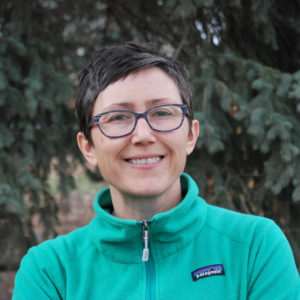Story originally published on SOURCE by Drew Smith.
Erika Osborne has been awarded a Fulbright Scholarship to pursue an art project in the southern Baja California Peninsula of Mexico in fall 2019. Osborne proposed a project to examine the forests of the Sierra de la Laguna Mountain Range.
Osborne’s work has been focused on the complex interactions between culture and nature. She has done extensive work in the Tahoe region on forest fire ecology and consults with scientists and forest managers in the area to conduct her research.
A healthy forest
Osborne reports that the western forests of the U.S. are rather unhealthy at the moment, mostly due to fire policies that date back to when the United States Forest Service started putting fires out in the early 1900s. In contrast, the forests of the Baja Peninsula haven’t needed a fire management program and remain minimally inhabited.
“This forest has barely been touched from a conservation standpoint, and hasn’t even been cataloged,” said Osborne. “Aside from small free-range cattle operations, local foraging and the remains of an old mining operation, the core area of this mountain range has been unmanaged, and because of this it’s quite healthy.”
That said, the Comisión Nacional de Areas Naturales Protegidas, the environmental commission that manages and protects forests in Mexico, attempted to implement a fire regimen last November but postponed it due to consistent precipitation. The fire management strategy is being implemented with a different set of values and criteria than those in the U.S. Osborne hopes that she will be able to evaluate the implementation of the new procedures during her stay.
Drawing comparisons
Forest land that has had little disruption and no fire management strategies gives Osborne the opportunity to create direct comparisons between the forest in Mexico and the ones she has studied in the western U.S.
“This is one of the most preserved forests in Mexico, and possibly in North America,” said Osborne.
Osborne will spend nine months working in the mountain range with her family, collaborating with the locals and the new fire management regimen, to reflect on the forest and then create a body of work that reflects her collective experience.
“To have our forests survive into the future, we need to take a look at how they have operated in the past,” said Osborne. “That means finding a way for fire to become a part of our forests, in a more consistent and less destructive manner than it currently is.”
The artwork
Osborne won’t decide what she will produce for her project until she spends time in Mexico. As an artist, her work tends to be specific to the project at hand. Though she is rooted in painting and drawing, her work sometimes extends into sculptural forms, performances, video and even digital renderings.
“My practice is putting myself in a place and gleaning all I can from the culture and environment of that place,” said Osborne. “That includes people that live there, scientists who study the environment in detail, and then the physical location itself, and from all of this, the project develops.”
The project will be shown where the CSU Liberal Arts and Community Engagement Center is located in Todos Santos. It will also have an archival spot in the Nevada Museum of Art.
